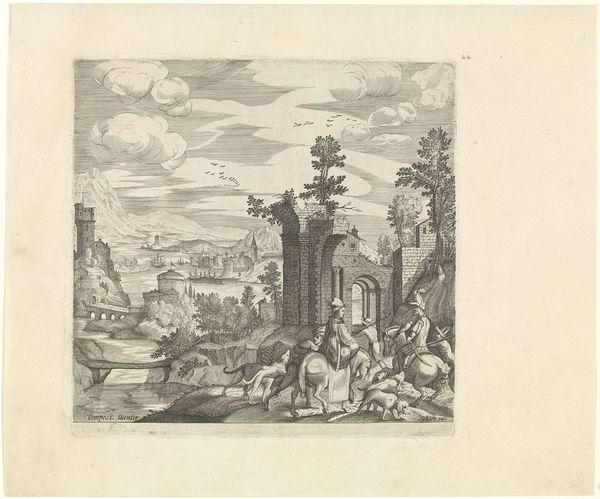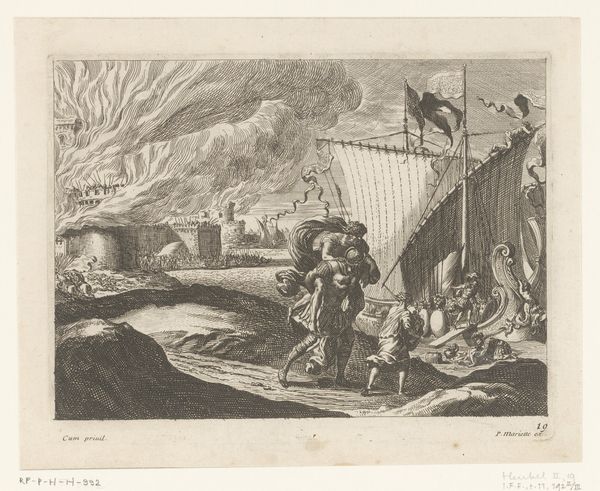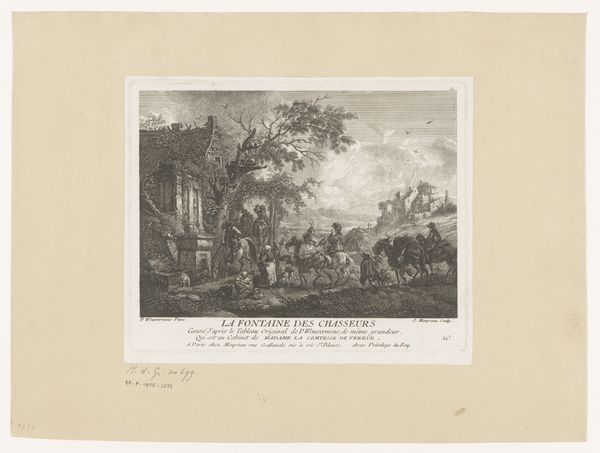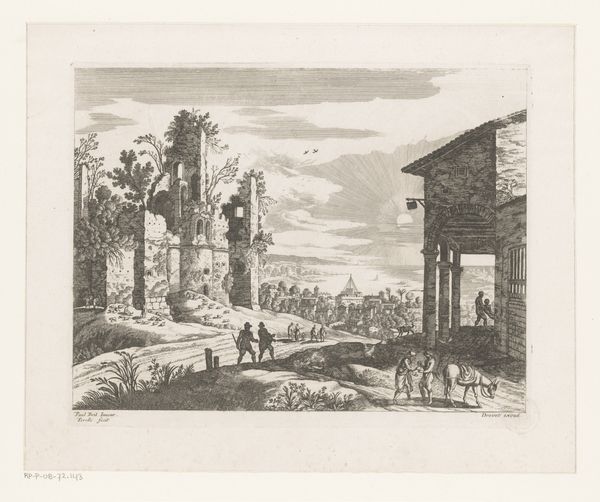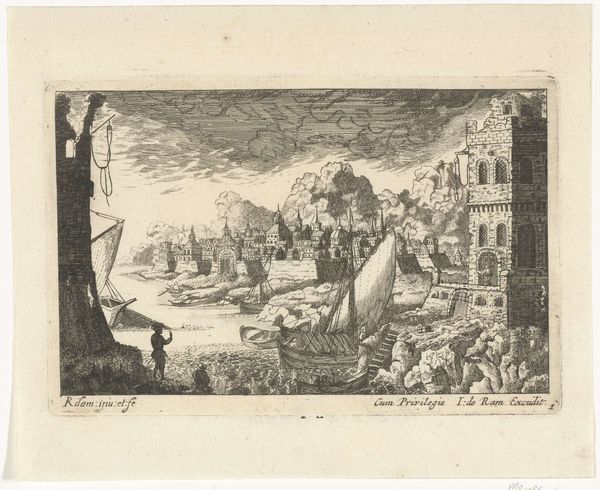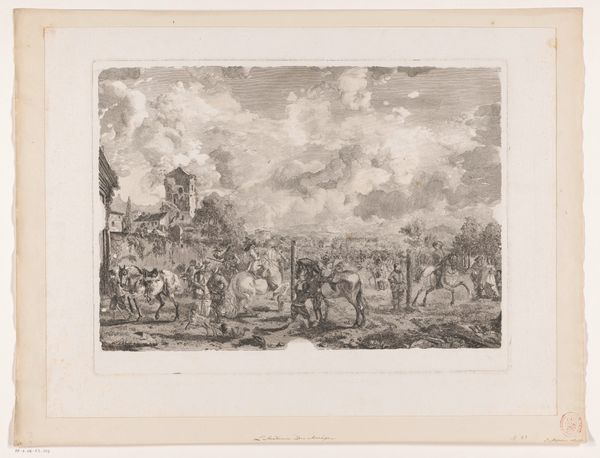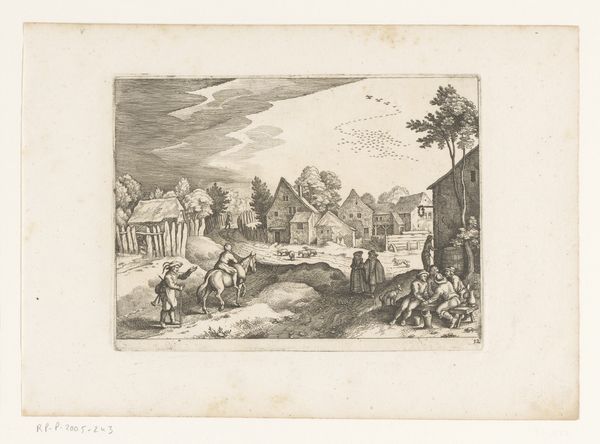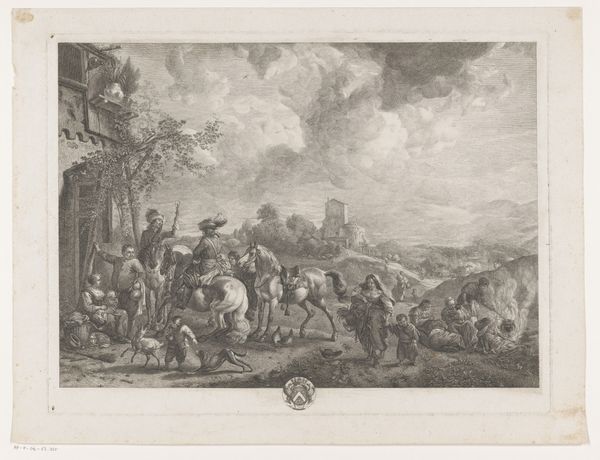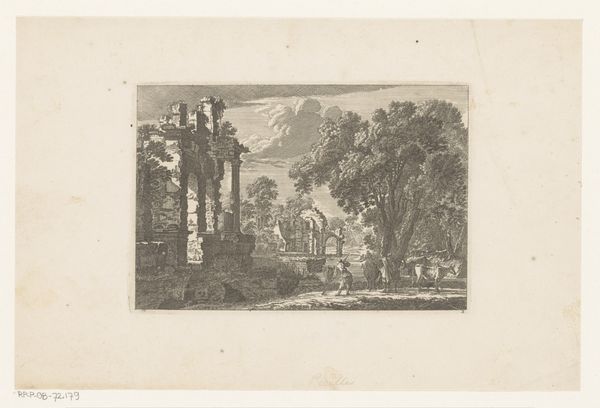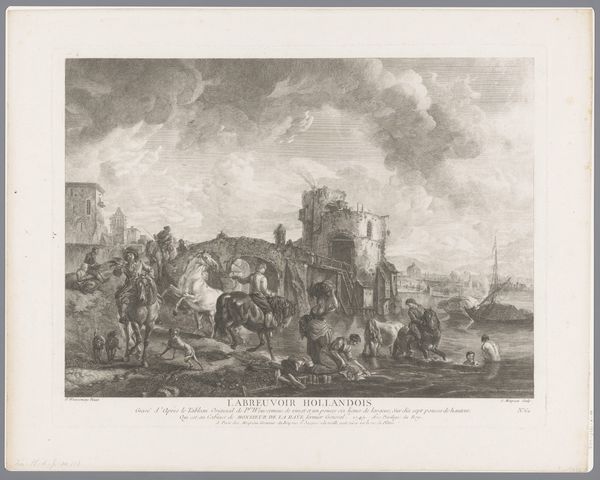
print, etching, engraving
# print
#
etching
#
landscape
#
classical-realism
#
figuration
#
11_renaissance
#
history-painting
#
engraving
Dimensions: height 169 mm, width 113 mm
Copyright: Rijks Museum: Open Domain
Curator: Let’s turn our attention now to a captivating etching and engraving simply known as “Portret van Frederick William Herschel." While it's titled as a portrait, I see no singular individual dominating the scene; instead, it appears to showcase a dramatic landscape full of narrative and symbolic layers. The artwork resides in the esteemed collection of the Rijksmuseum. Editor: Landscape? Hmm. My initial response is, this print is restless! All those churning waves and ominous clouds really stir something in my gut. It gives off the feeling of imminent drama or maybe the aftermath of something terrible, some sunken secrets coming back up. The figures at the forefront almost seem incidental, like witnesses after the fact. Curator: An insightful interpretation. Water, since antiquity, holds deep symbolism. It can signify chaos and purification, both threatening and life-giving, and here we certainly see those contrasting elements in the dynamic waves and classical realism that imbues every architectural element with weighty reference. These forms create memory and provide an ideal vehicle for meaning. Look closely and you will find an antique canon represented along with a multitude of symbols. Editor: It definitely feels like an archetypal shipwreck scene from Homer, full of pathos and gods behaving badly! What I find interesting, as you say, is this sense of continuity. While we're considering that turbulent period that defined him, Frederick William Herschel represents astronomy, charting those cold distant heavens that are maybe a safe place from these primal human storms. The engraving is fascinating: its landscape almost mirrors, perhaps satirizes, these eternal myths! Curator: Precisely. There's a kind of historical echo in the visual language—as if history itself, with its constant turbulence, is the sea in question. Do you get that as well? A dialogue with time where classical themes like tragedy confront Enlightenment-era rationalism as exemplified by Herschel himself? Editor: Oh, yes. So, the romantic vision versus the cold scientist perhaps? A real tug-of-war between feeling and intellect. Which kind of pulls us, like the tides, between despair and hope. In that sense the portrait might ask if understanding the physical world is some remedy for enduring this kind of mythic drama... Fascinating.
Comments
No comments
Be the first to comment and join the conversation on the ultimate creative platform.
